Last Updated on: June 12fth, 2025
- Licensed Agent
- - @M-LifeInsurance
Thinking about the end of life is never an easy thing, especially for your loved ones. These thoughts bring up emotions we often try to avoid: grief, fear, and uncertainty. But one of the kindest things we can do for our loved ones is to plan. Planning for the end may not be a topic you want to discuss or think about. When someone passes, the last thing a grieving family wants to think about is where to bury them, how to find a burial plot, or how much it will cost. These decisions, made in a hurry, can be very expensive. You have to make sure that you will get things right by knowing the real costs that are budget-friendly.
This guide will help you understand the real cost of burial plots, how to find the right place, and how to make choices that save money and bring peace of mind. You’ll learn what you might have to pay, why prices are different in each place, and how to choose what’s best for you and your family. Let’s take a closer look at what it costs to find a final resting place today.
Table of Contents
ToggleWhat Is a Burial Plot
A burial plot is the place that is designated for a cemetery where a person is laid to rest after death. This place is usually meant for one person, but the size and type depend totally on the cemetery. The price of the burial plot can change a lot time to time. This price change depends on the location, services, and the type of graveyard.
Burial Plot Cost? Overview of Pricing
Now you have an idea of the burial plot, what is it? And why it matters the most. Now let’s have a detailed look at the costs and expenses of the different types of burial plots.
Average Burial Plot Cost
The cost of a burial plot can vary across the United States. The average burial plot ranges from $1,000 to $4,000, with prices changing based on city, cemetery, and other factors.
- Urban areas and popular cemeteries
In big cities and well-known cemeteries, prices are higher, and the cost can be $5000.
- Small towns and Unpopular cemeteries
There are less popular cemeteries in the smaller towns or cities, and there the burial plots cost $1000 to $2000.
Costs Listed on a Cemetery Price List
When you review a cement price list, you will get to know the price breakdown for the different things. The full expense includes these things.
- Plot purchase price:
This is the cost of buying the actual piece of land where the burial will take place.
- Opening and closing fees:
These are the charges for digging the grave when needed and filling it back up after the burial.
- Perpetual care fees:
This money is collected to make sure the cemetery is properly maintained and cared for over many years, including landscaping and repairs.
- Additional fees:
These are extra costs that will cover things like installing headstones or markers on the graveyard, purchasing a burial vault or liner, or any special services you may want from the cemetery.
Burial Plot Costs – Key Factors That Influence the Price
The price of the burial plot can change from time to time, and this change depends on some factors. These factors include;
Location
If the burial plot is near the big city, it will cost you more because the land is valuable there. You have to expect higher prices if the cemetery is in a popular area
Cemetery Type
There are different kinds of cemeteries, and they do have their own pricing rules. There are private cemeteries, religious, and municipal. Private cemeteries charge higher prices while the city-owned ones, which are municipal, are affordable and budget-friendly.
How Much Does Life Isurance Cost?
Plot Size and Type
The size and type of the burial plot make a huge difference in pricing. Single plots for one person are cheaper, while double or family plots are more expensive because they hold multiple burials. Special sections chosen by the families or the groups also have different prices
Additional Services
There are some cemeteries that charge additional fees because they provide the burial vaults, and they charge for maintenance and paperwork, which is why the total cost of the burial plot increases.
Demand and Availability
There are some of the older cemeteries in popular locations that may have limited space left, which drives prices up because of high demand and low supply.

How Much Does a Grave Cost?
The term grave means an actual site within a burial plot where the body is laid to rest after death. The cost of a grave usually includes more than just the plot of land. It also covers the work needed to dig the grave and prepare it for the burial.
The average cost of a grave is usually between $3,000 and $7,000. This total includes the price of the burial plot, as well as the fees for digging and filling the grave. The final amount can change depending on the cemetery’s rules, local laws, and what services are included in the price.
Price of a Funeral Plot
The funeral plot, also known as the burial plot but sometimes it comes up with extra services for the funeral. The cost is usually the same as a burial plot and can range from $1,000 to $4,000, depending on the location and cemetery.
Some funeral homes or cemeteries also offer package deals. These can include the plot itself, digging and closing the grave, and even a small memorial service. These packages can make things easier, and sometimes this will help you save money.
Graveyard Plot Prices vs. Cemetery Plot Cost
People are always using the words “graveyard” and “cemetery” to mean the same thing, but they are a little different. A graveyard is older and is found next to a church. The cost of a plot in a graveyard is sometimes lower and may be set by the church.
While the Cemeteries are often larger and are managed privately, with prices that can change depending on the location and services offered.
Graveyard plots can cost as little as $500 to $2,000, while cemetery plots, especially in private or well-known places, usually cost more..
Burial Plots Cost – Summary Table
| Type of Plot | Average Cost Range |
| Burial Plot | $1,000 – $4,000 |
| Grave Plot | $1,000 – $4,000 |
| Funeral Plot | $1,000 – $4,000 |
| Total Grave Cost (plot + fees) | $3,000 – $7,000 |
| Graveyard Plot | $500 – $2,000 |
FAQs About Burial Plot Costs
1. How Much Is the Cheapest Burial Plot?
The cheapest burial plots typically cost around $500 to $1,000, often found in big areas or older graveyards with limited space to bury. Municipal cemeteries sometimes offer lower prices compared to private ones.
2. How Many Bodies Can Be Buried in One Grave?
Usually, a single burial plot accommodates one body. However, some cemeteries allow:
- Double-depth graves: Two bodies, one stacked above the other.
- Family plots: Multiple adjacent graves.
- Cremation plots: Smaller spaces for urns that may hold multiple urns.
Always check cemetery policies as they vary widely.
3. At What Age Should You Buy a Burial Plot?
There is no fixed age, but buying a burial plot earlier in life can secure preferred locations and avoid future price increases. Many financial planners recommend considering a plot purchase in your 30s or 40s, especially if you want to plan ahead.
Tips to Save on Burial Plot Costs
- Compare Cemetery Price Lists: Get quotes from several cemeteries.
- Consider Rural Cemeteries: They often have lower prices.
- Buy in Advance: Prices tend to rise over time.
- Look for Family Plots: Purchasing multiple plots can be more economical.
- Check for Veterans or Community Discounts: Some cemeteries offer reduced rates.
Conclusion
Planning for end-of-life arrangements can feel so emotional and hard, but this is the truth that everybody will go one day. Planning the right things and managing the expenses are very important to save money and avoid end-of-time tension for your family. One of the most important things to think about is the cost of the burial plot.
Knowing how much a burial plot costs in 2025 can save you from the stress, confusion, and tension of huge bills when you are already sad. Burial plots usually cost between $1,000 and $4,000, and the total price with other fees can go up to $7,000. The cost depends on many things, like where the cemetery is, the type of cemetery, and extra services you might need. By learning about these costs and maybe buying a plot early, you can make smart and affordable decisions that give peace to you and your family during a difficult time.
Looking for the best funeral insurance options to protect your loved ones? Visit Mlife Insurance today to explore affordable plans tailored to your needs. Get a free quote now and take the first step toward peace of mind and financial security for your family. Don’t wait – secure your future today!

Joyce Espinoza, Expert Life Insurance Agent
Joyce Espinoza is a trusted life insurance agent at mLifeInsurance.com. She’s been in the insurance industry for over ten years, helping people, especially those with special health conditions to find the right coverage. At MLife Insurance, Joyce writes easy-to-understand articles that help readers make smart choices about life insurance. Previously, she worked directly with clients at Mlife Insurance, advising nearly 3,000 of them on life insurance options.


